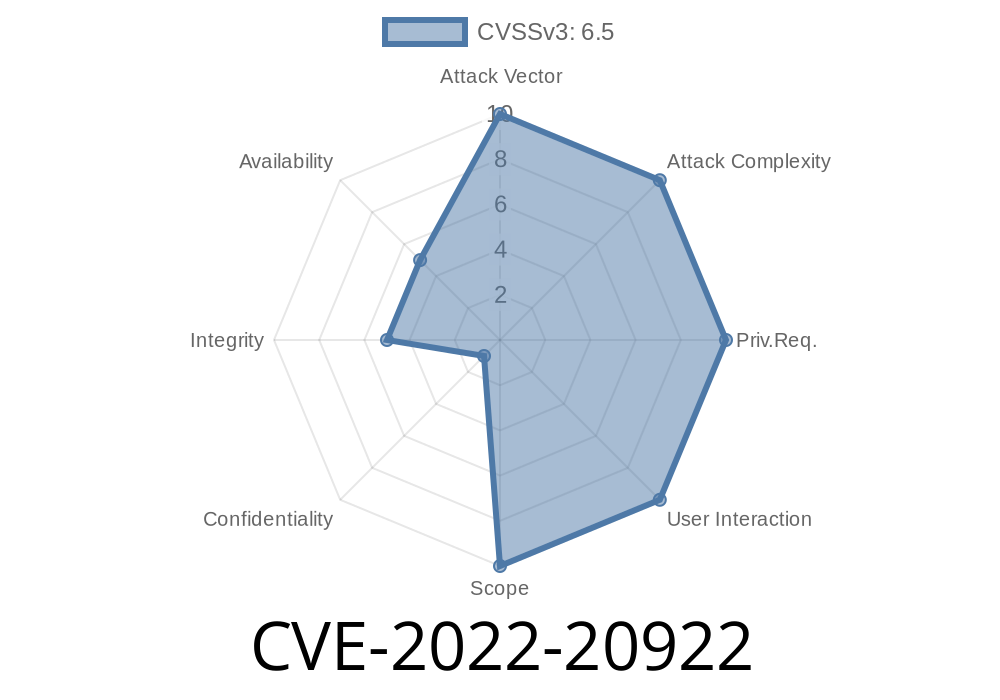Multiple vulnerabilities have been identified in the Server Message Block Version 2 (SMB2) processor of the Snort detection engine on various Cisco products. An unauthenticated, remote attacker can exploit these vulnerabilities to bypass configured policies or cause a denial of service (DoS) condition on affected devices. These vulnerabilities could lead to significant security risks for organizations relying on these Cisco products for network protection.
This post will provide details about the CVE-2022-20922 vulnerabilities, including code snippets, links to original references, and information on how to exploit these vulnerabilities.
Vulnerability Details
These vulnerabilities (CVE-2022-20922) are a result of improper management of system resources when the Snort detection engine processes SMB2 traffic. An attacker could exploit these vulnerabilities by sending a high rate of specific SMB2 packets to an affected device. If the exploit is successful, it could trigger a reload of the Snort process, resulting in a DoS condition.
When the snort preserve-connection option is enabled for the Snort detection engine, a successful exploit could also allow an attacker to bypass configured policies and deliver a malicious payload to the protected network. The snort preserve-connection setting is enabled by default (read more about this option in the official Snort documentation).
Only products configured with Snort 3 are affected by these vulnerabilities, while products configured with Snort 2 are not affected.
A hypothetical code snippet demonstrating the vulnerability is shown below
import socket
TARGET_IP = "192.168.1.1"
SMB2_PACKET = b"\x00\x00\x00\x00\x00\x00\x00\x00\x00\x00\x00\x00\x00\x00\x00\x00" # Replace with real SMB2 packet
sock = socket.socket(socket.AF_INET, socket.SOCK_STREAM)
sock.connect((TARGET_IP, 445))
for _ in range(100000):
sock.send(SMB2_PACKET) # Send high rate of SMB2 packets to trigger the vulnerability
sock.close()
An attacker could potentially exploit these vulnerabilities using the following steps
1. Identify an affected Cisco product with Snort 3 configured (products with Snort 2 are not vulnerable).
Craft a series of malicious SMB2 packets designed to trigger the vulnerabilities.
3. Send the packets at a high rate to the target device, potentially triggering a reload of the Snort process and the subsequent DoS condition.
4. If the snort preserve-connection option is enabled (default), an attacker may be able to bypass configured policies and introduce a malicious payload into the protected network.
Please note that executing these steps may be illegal and unethical. This information is provided for educational purposes and to aid the mitigation of these vulnerabilities.
For more information about these vulnerabilities, refer to the following sources
- Cisco Advisory on the CVE-2022-20922 Vulnerabilities
- CVE-2022-20922 on Mitre.org
- Snort Documentation
Conclusion
The CVE-2022-20922 vulnerabilities present a significant risk to organizations using Cisco products configured with the Snort 3 detection engine. It is essential to apply any available patches or implement appropriate mitigation strategies to protect networks from potential attacks exploiting these vulnerabilities. Additionally, regularly review and update network security policies to ensure continued protection against new threats and vulnerabilities.
Timeline
Published on: 11/15/2022 21:15:00 UTC
Last modified on: 11/22/2022 00:46:00 UTC
